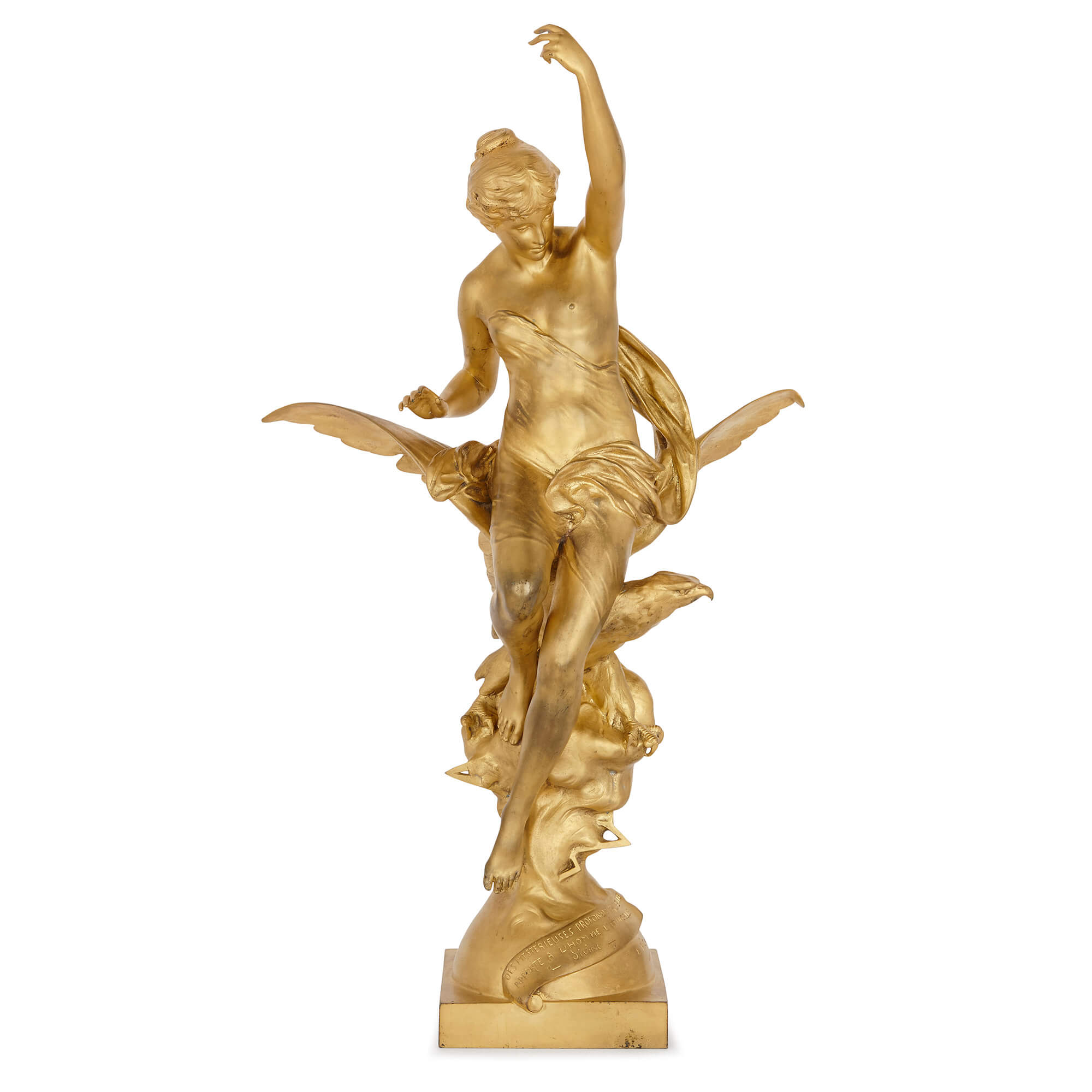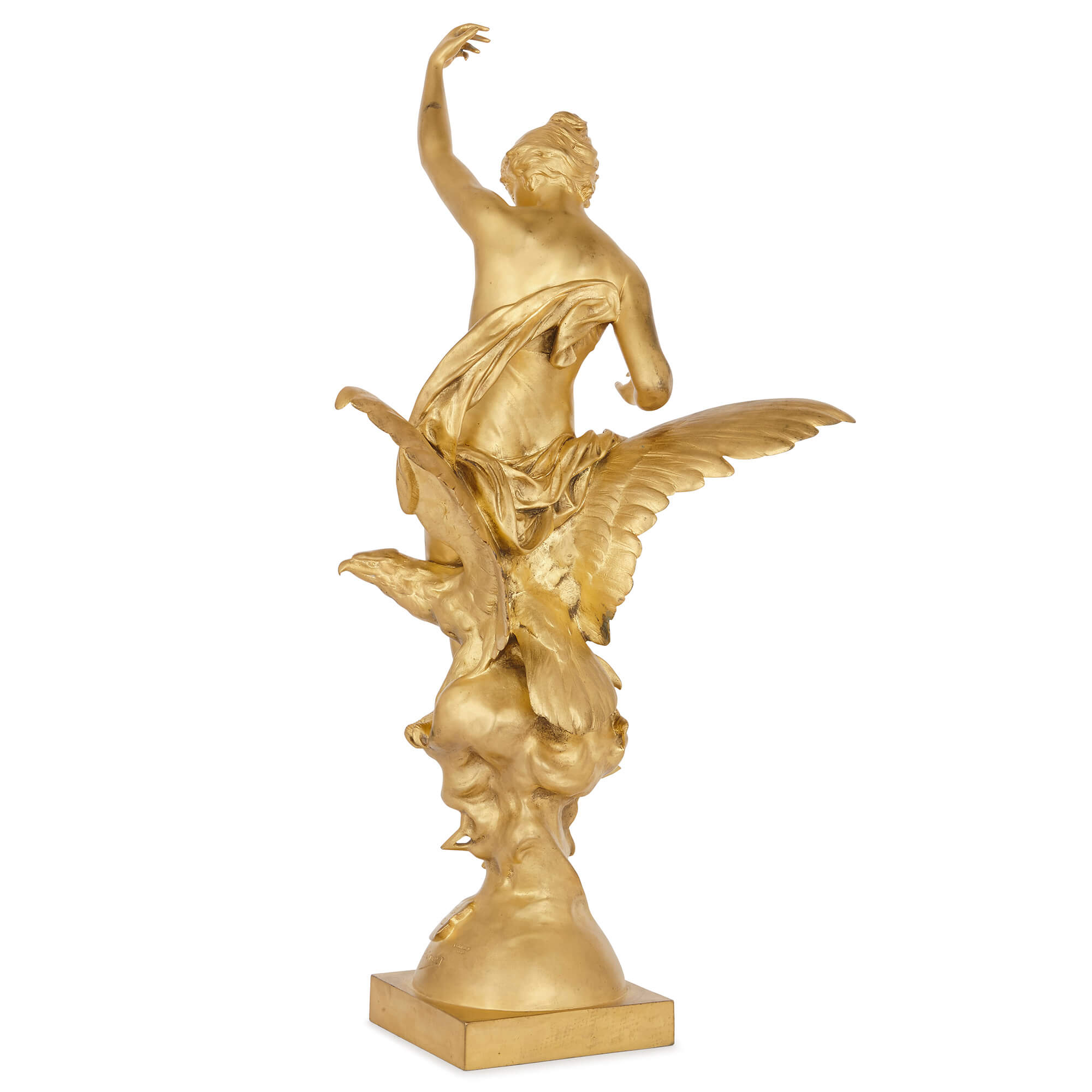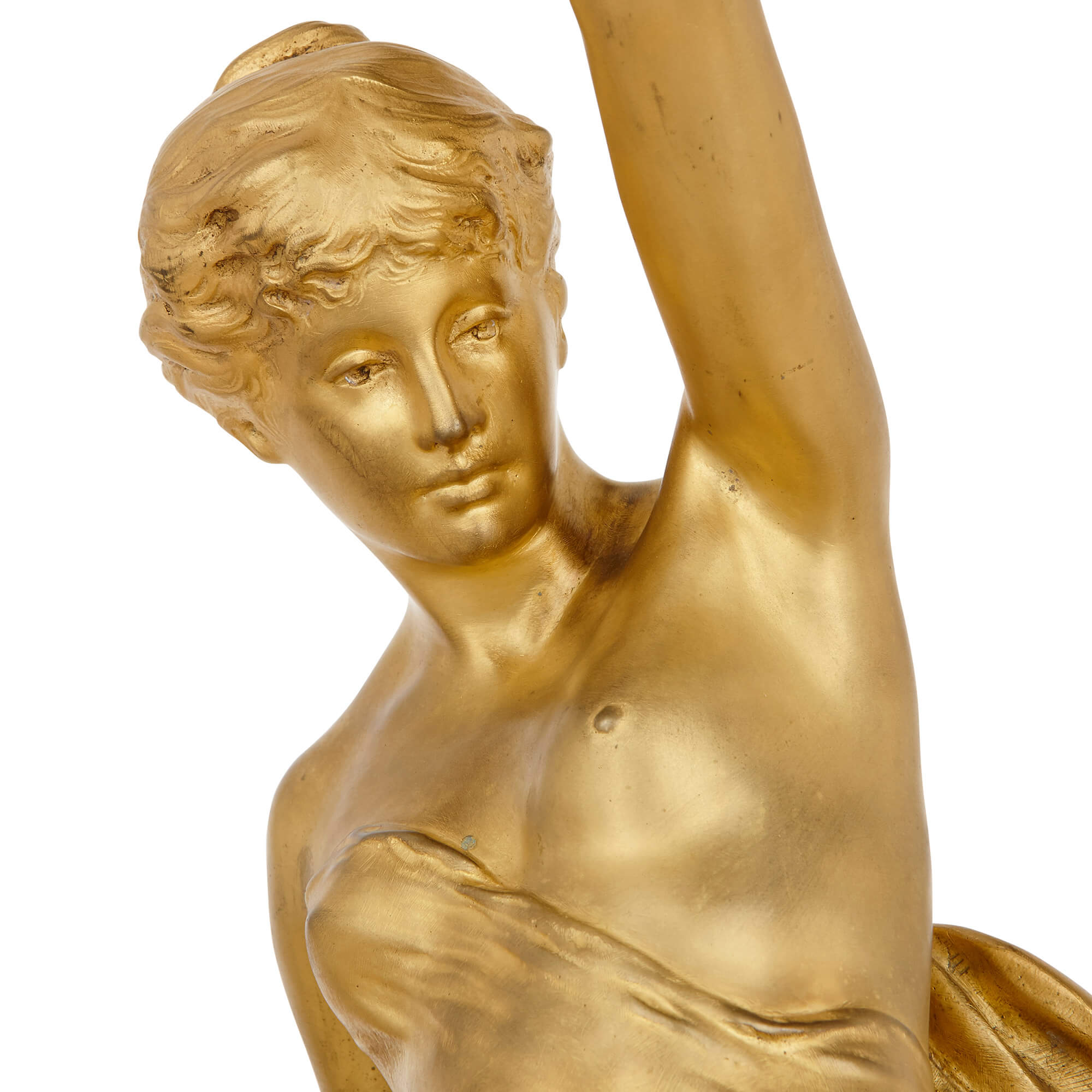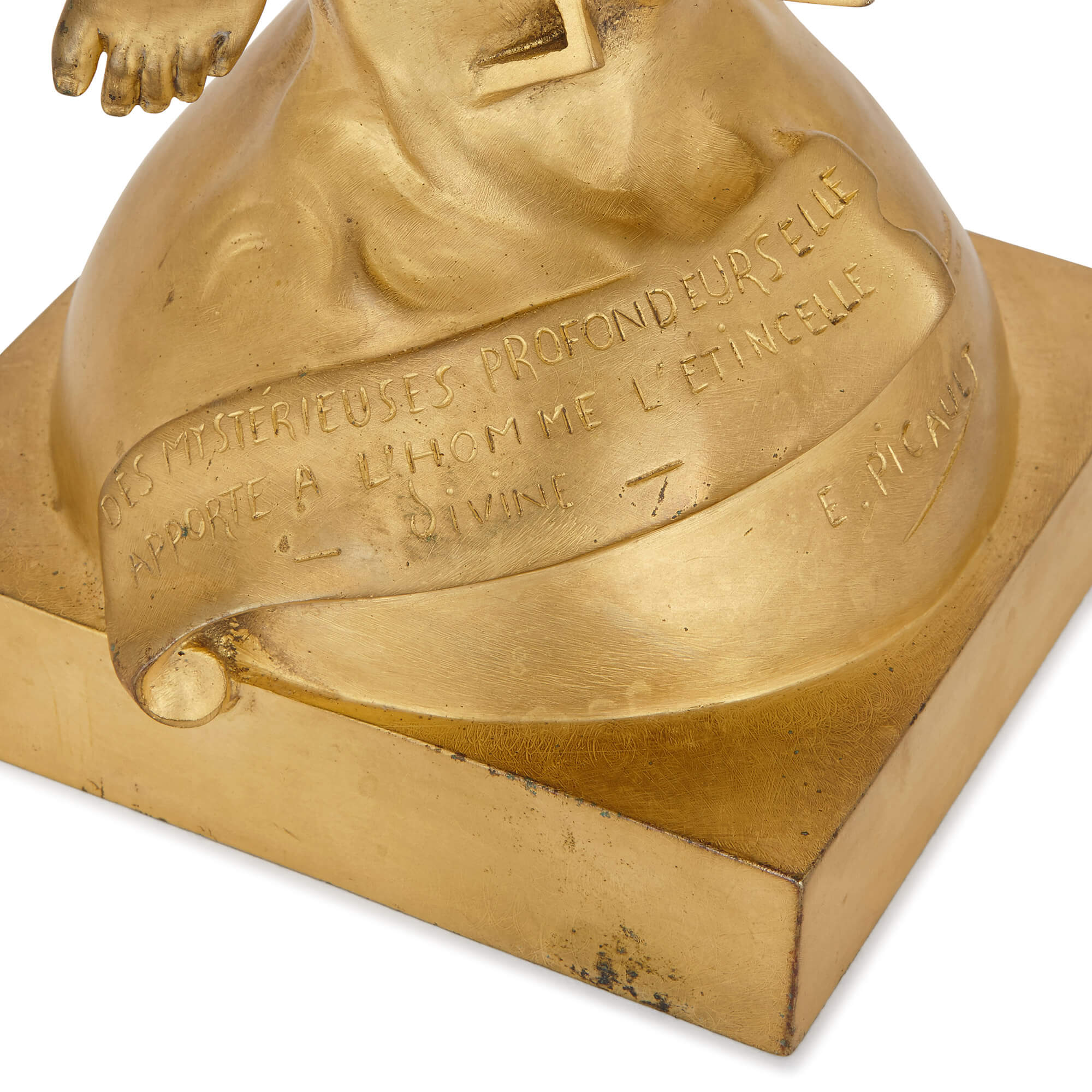This gilt bronze figurative sculpture was crafted in the late 19th Century by the famous French sculptor, Emile Louis Picault. Picault is well known for mythological works, such as this, and those which have an allegorical or patriotic subject matter. Bronze and plaster sculptures by Picault can be viewed in many important museums, mostly in and around France.
This sculpture depicts the classical Greek figure, Hebe, the child of Zeus and Hera, who served as the cupbearer for the gods and goddesses of Mount Olympus. She is pictured in flight, seated on the back of an eagle, which her father, Zeus, has transformed himself into.
Hebe is represented as a beautiful young woman, which is fitting since it was believed she had the power to give eternal youth. She strikes a dynamic pose, with her left arm and leg extended, and her right limbs bent. This creates a sweeping curve, which runs along the left side of her body. Hebe wears a piece of diaphanous fabric draped around her body, which catches the wind and is thrown backwards. She looks down to her left and surveys the world below. Zeus, in eagle form, rests of a stormy cloud, sending lightning bolts hurtling down to earth.
Picault has managed to render, in bronze, the great movement and drama of this mythological scene.
On the base of the sculpture, an inscription reads 'Des mysterieuses profondeurs elle apporte a l'homme l'étincelle divine' ('From mysterious depths she brings to man the divine spark'). This is accompanied by the artist's signature, 'E. Picault', and the name of the manufacturer, 'E. Colinage Paris'.










